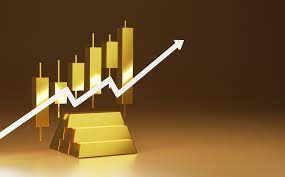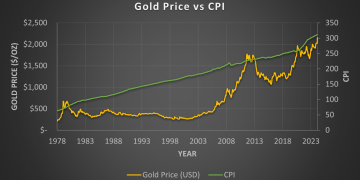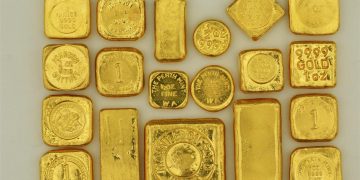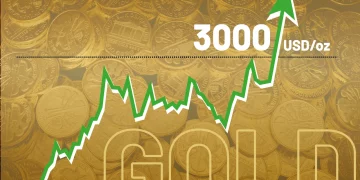Gold has long been regarded as a cornerstone of wealth preservation, and in the face of rising geopolitical tensions, inflation concerns, and uncertain economic conditions, its demand has been increasing. As we approach 2025, experts are projecting continued growth in the gold market, driven by various factors. Whether you’re a seasoned investor or new to the world of gold, understanding these trends and how to adjust your investment strategy can position you to capitalize on gold’s rising demand.
In this article, we will explore the key factors driving the increasing demand for gold, offer expert advice on how to adjust your portfolio in response, provide tips for timing your investments, and delve into the broader market cycles that create opportunities for savvy investors.
Trends Driving Increasing Demand for Gold
Geopolitical Tensions and Global Instability
One of the primary factors driving gold’s increasing demand is the rise in geopolitical tensions. Over the past few years, political instability, regional conflicts, and uncertainty around global trade have made gold an attractive safe-haven asset. When investors feel uncertain about the global political landscape, they tend to seek out assets that are considered stable and reliable, and gold fits this role perfectly.
Geopolitical instability can cause significant volatility in other asset classes like equities, currencies, and bonds. As a result, gold prices tend to rise as investors flock to the yellow metal as a way to safeguard their wealth. Whether it’s trade wars between major economies, tensions in the Middle East, or the unpredictability of national elections, geopolitical risks are likely to continue influencing gold demand in the coming years.
Inflation Concerns and Gold’s Role as a Hedge
Another crucial factor contributing to gold’s increasing demand is inflation. With the global economy emerging from the pandemic, inflationary pressures are rising in many countries. Central banks have printed large amounts of money to support economic recovery, and this has led to concerns over the devaluation of fiat currencies.
Gold is widely regarded as a hedge against inflation because, unlike paper currencies, it is not subject to government printing or manipulation. Historically, when inflation rises, the price of gold tends to rise as well, as investors seek to preserve their purchasing power. The continued rise in inflation in various parts of the world, particularly in developed markets, is expected to drive greater demand for gold as an inflation hedge.
Low Interest Rates and Central Bank Policies
The monetary policies of central banks around the world are also influencing the demand for gold. With interest rates remaining at historically low levels in many countries, the opportunity cost of holding gold—compared to bonds and other fixed-income assets—remains low. This environment encourages more investment in gold, as it provides a potential store of value without yielding any negative returns.
Moreover, central banks in emerging markets are increasingly adding gold to their reserves as a way to diversify away from the U.S. dollar and protect their economies against global economic shocks. This central bank demand is expected to remain strong, adding upward pressure on gold prices.
How to Adjust Your Portfolio in Response to These Trends
Diversification: Balancing Risk with Gold Exposure
Given the rising demand for gold and its role as a hedge against market instability, it’s crucial for investors to include gold in their portfolios as a way to diversify their assets. Diversification is a key principle of sound investing—it helps spread risk across different asset classes and reduces the potential for large losses during periods of market volatility.
When adjusting your portfolio to respond to gold’s rising demand, consider allocating a portion of your assets to gold-based investments. This can be done through physical gold (such as bullion or coins), gold exchange-traded funds (ETFs), gold mining stocks, or mutual funds that focus on precious metals. The amount you allocate to gold will depend on your risk tolerance, investment goals, and the overall makeup of your portfolio.
Gold ETFs and Gold Mining Stocks: A Liquid Alternative
For investors who prefer liquidity and ease of access, gold ETFs and gold mining stocks offer an efficient way to gain exposure to the gold market. Gold ETFs allow investors to buy and sell gold without having to worry about storage or security concerns associated with physical gold. Similarly, gold mining stocks provide exposure to gold prices while benefiting from the potential upside of successful mining operations.
Gold mining stocks can offer higher returns compared to physical gold or gold ETFs, but they come with additional risks, such as operational challenges, geopolitical risks, and fluctuating production costs. It’s important to assess these risks before allocating a significant portion of your portfolio to gold mining stocks.
Hedging with Gold: A Safe Haven for Volatile Times
Gold’s role as a safe-haven asset becomes particularly relevant during periods of market turbulence. As we’ve seen during previous financial crises, such as the 2008 global recession and the COVID-19 market sell-off, gold tends to perform well when other asset classes are under pressure. Investors seeking to hedge against market risk should consider increasing their exposure to gold during times of uncertainty.
If you’re unsure about how much gold to hold in your portfolio, experts generally recommend keeping between 5% and 10% of your total investment in gold. This allocation can help provide stability to your portfolio, especially during periods of heightened market risk.
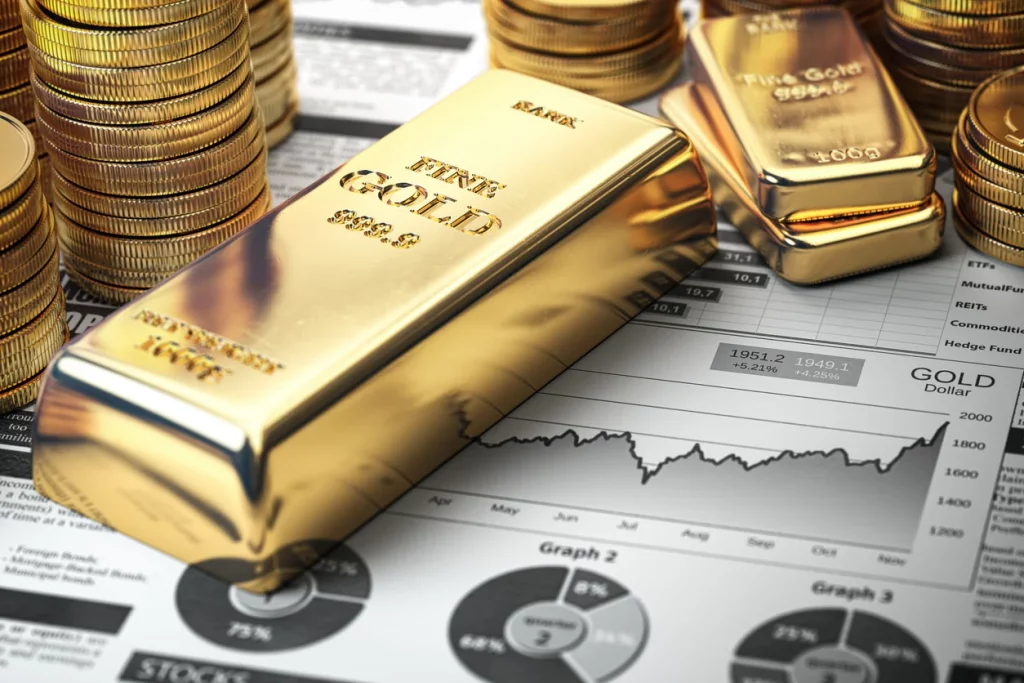
Expert Tips for Timing Your Gold Investments in a Rising Market
1. Be Patient: Don’t Chase Short-Term Price Movements
While gold has shown significant growth over the past few years, experts advise against chasing short-term price movements. Timing the market can be difficult, and attempting to buy at the lowest possible price often leads to missed opportunities. Instead of trying to predict the exact timing of gold’s price movements, experts recommend adopting a long-term investment strategy and purchasing gold gradually over time.
One common strategy is dollar-cost averaging (DCA), where you invest a fixed amount of money into gold at regular intervals, regardless of price fluctuations. This approach helps smooth out the impact of short-term price volatility and lowers the risk of buying at an unfavorable time.
2. Monitor Inflation and Interest Rates
As inflation and interest rates play a significant role in gold’s price, it’s crucial to stay informed about economic conditions in key markets. Rising inflation generally supports higher gold prices, while higher interest rates could put downward pressure on gold demand. Keep an eye on central bank policies, particularly in the U.S. Federal Reserve and other major central banks, to gauge the potential direction of gold prices.
3. Understand Gold’s Market Cycles
Like any other asset, gold follows market cycles, with periods of price increases followed by corrections. Understanding these cycles can help you make more informed investment decisions. Historically, gold prices tend to rise during times of economic uncertainty, but they can also experience short-term pullbacks during periods of market optimism.
By studying historical data and market patterns, investors can better understand when gold may be entering a bull or bear market phase. Being aware of market cycles can help you capitalize on price dips and take advantage of rising demand when conditions are favorable.
Understanding Market Cycles and Opportunities in Gold
1. The Bullish Cycle: When Gold Prices Soar
Gold typically experiences bullish cycles when there is increased demand due to geopolitical instability, inflation, or economic uncertainty. During a bullish cycle, prices tend to rise as investors flock to gold as a safe haven. The 2008 financial crisis and the COVID-19 pandemic are two recent examples of bullish cycles driven by market turmoil.
During a bullish cycle, gold prices can increase significantly, and this is the time when investors can capitalize on the rising value of their gold holdings. However, it’s important to remember that gold prices do not go up indefinitely—eventually, corrections or bear markets may follow.
2. The Bearish Cycle: When Gold Prices Regress
Gold prices also experience bearish cycles, during which prices correct or decline. This typically occurs when market optimism increases, central banks raise interest rates, or inflationary pressures subside. During a bearish cycle, gold may experience a period of consolidation, and prices may retreat from their previous highs.
For investors, a bearish cycle can provide opportunities to buy gold at lower prices, especially if you believe that gold will eventually return to an upward trajectory. Patience is key during bearish cycles, as gold’s value may fluctuate before a new bullish cycle begins.
Conclusion
Capitalizing on gold’s rising demand in 2025 requires an understanding of the macroeconomic trends that are shaping the market, as well as a strategic approach to portfolio management. By diversifying your assets, timing your investments carefully, and being aware of gold’s market cycles, you can take advantage of the opportunities presented by the increasing demand for this precious metal.
Gold’s status as a safe-haven asset, its role as an inflation hedge, and the ongoing geopolitical and economic uncertainties all point to a strong demand for gold in the years to come. As always, remember to consult with financial advisors and conduct thorough research to ensure that your gold investments align with your long-term financial goals.


















